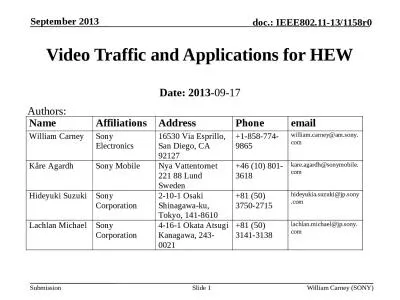PPT-Slides by Erin Peach and Nick Carney with material from Vinod
Author : liane-varnes | Published Date : 2019-10-31
Slides by Erin Peach and Nick Carney with material from Vinod Rathnam Alex Mariakakis Krysta Yousoufian Mike Ernst Kellen Donohue Section 4 Graphs and Testing
Presentation Embed Code
Download Presentation
Download Presentation The PPT/PDF document "Slides by Erin Peach and Nick Carney wi..." is the property of its rightful owner. Permission is granted to download and print the materials on this website for personal, non-commercial use only, and to display it on your personal computer provided you do not modify the materials and that you retain all copyright notices contained in the materials. By downloading content from our website, you accept the terms of this agreement.
Slides by Erin Peach and Nick Carney with material from Vinod: Transcript
Download Rules Of Document
"Slides by Erin Peach and Nick Carney with material from Vinod"The content belongs to its owner. You may download and print it for personal use, without modification, and keep all copyright notices. By downloading, you agree to these terms.
Related Documents














